Best
Flute for Young Beginners
-
Overall: Durable ABS resin construction
-
Best Feature: Waterproof design for easy maintenance
-
TedScore™: 7/10
Best
Beginner
Flute
-
Overall: Responsive sound
with superb intonation -
Best Feature: Nickel silver body for durability
-
TedScore™: 9/10
Best
Value Beginner
Flute
-
Overall: Closed hole design
-
Best Feature: Easy playing response with a bright and open tone
-
TedScore™: 8/10
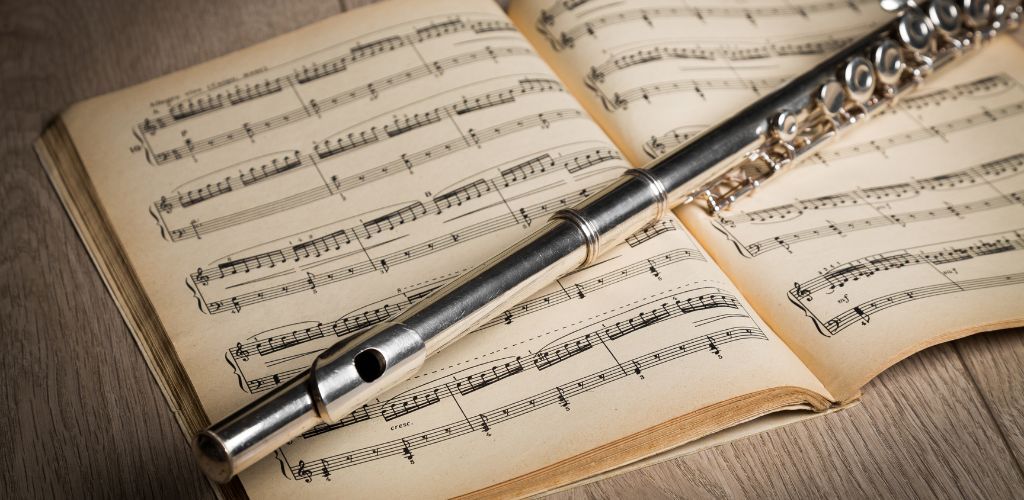
Have you ever been intimidated by the thought of learning to play the flute? You’re not alone!
One of the biggest obstacles for beginners is mastering the fingerings, which can seem complicated and overwhelming at first. However, with the help of a flute fingering chart, learning to play this beautiful instrument can become a much easier and more enjoyable process.
In this post, we’ll explore a flute-fingering chart, how to use it, and why it’s so important for your flute-playing journey. So sit back, relax, and let’s dive into the world of flute fingerings!
Basic Fingering Chart
for Flutes

Looking for a basic fingering chart for your flute?
Look no further!
This chart includes all the essential fingerings, but remember that alternate fingerings may be better in certain situations.
The B foot joint allows for low B and some high notes, while the thumb lever (known as the Briccialdi key) is best used in passages without B-natural.
Trill and Tremolo Fingering Chart for Flutes
Designed for rapid alternation between two notes, many fingerings can also be used as alternate fingerings.
The keys to be trilled are indicated in red; when more than one key is trilled, the keys should be pressed and released simultaneously.
Remember to adjust the speed of your trills to match the tempo of the music.
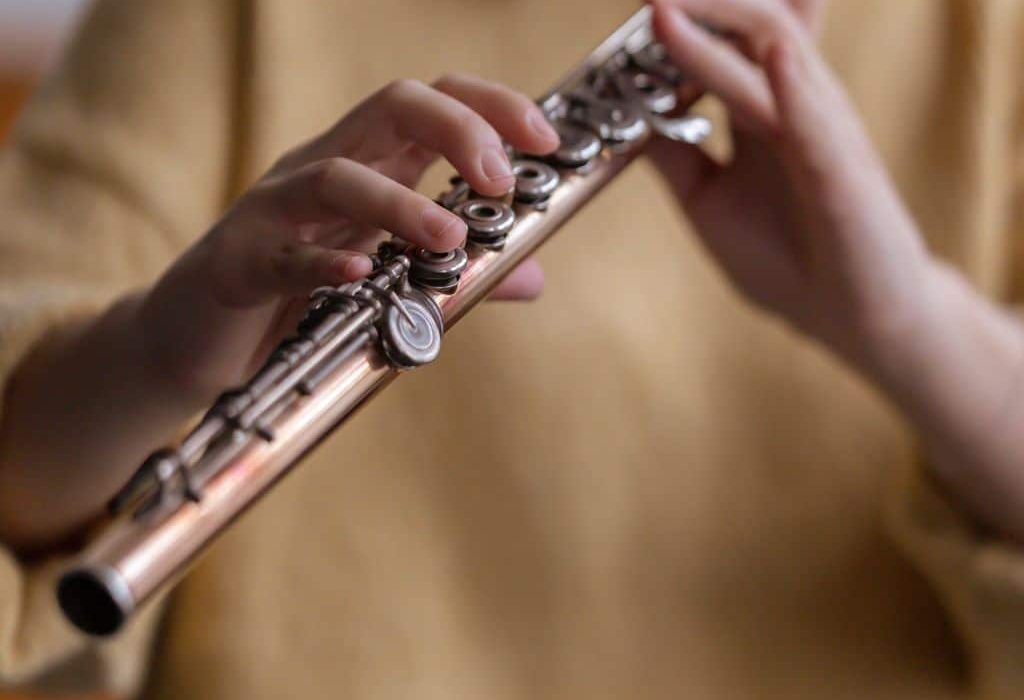
Fingering Chart for
Open-G# Flutes
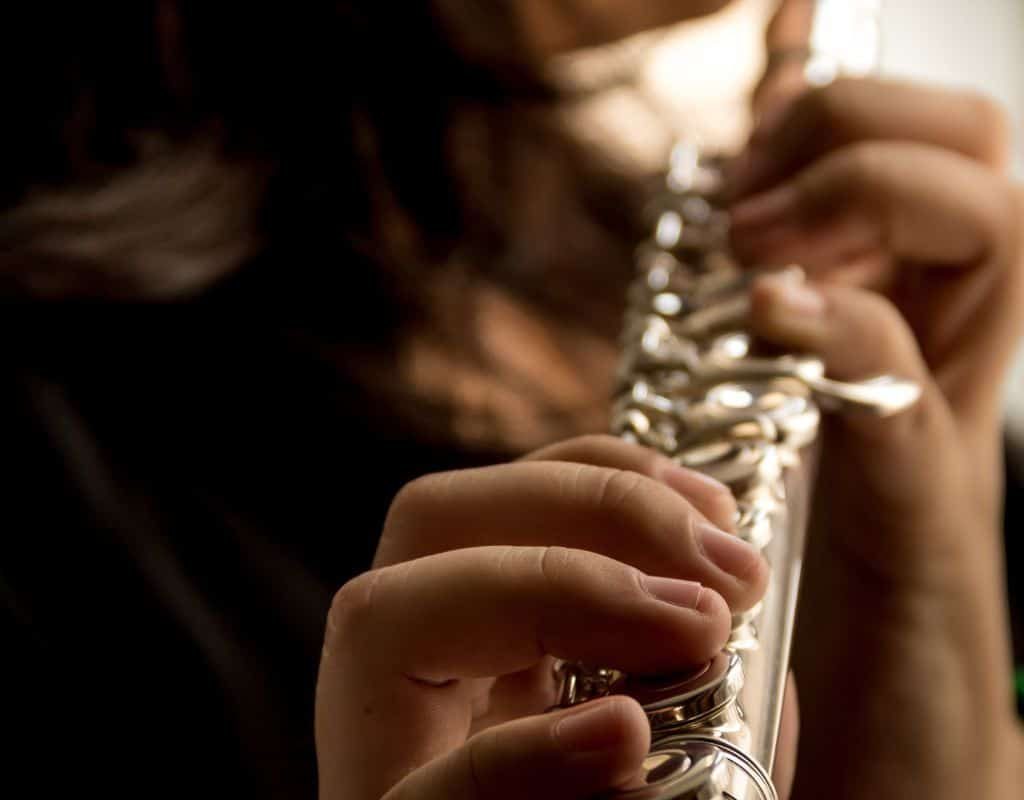
The fingering chart for this instrument (click here) is similar to that of the standard Boehm-system flute but with a few slight variations.
Use the correct fingerings for the open-G# key to produce a clear and accurate sound.
Quarter Tone Fingering Chart for Flutes
Looking for advanced flute techniques?
Check out the Quarter Tone Fingering Chart for Flutes here, which includes alternative fingerings for notes between the standard chromatic scale.
This chart, created by Herbert Lindholm, offers guidance on quarter-tone and modern flute techniques.

Useful Alternate Fingerings for Concert Flutes

Looking for useful alternate fingerings for concert flutes? Check out online resources like Nestor Herszbaum’s comprehensive fingering chart book or Wayne Hedrick’s chart of useful alternate fingerings.
It’s important to understand when and why to use alternate fingerings, as not all fingerings work the same on every type of flute.
The Role of Thumb Lever (Briccialdi) in Flute Fingering
When playing the flute, the thumb lever, also known as the Briccialdi, plays an important role in fingering.
This lever is best used in passages without any B-natural, as you can keep the lever depressed all the way through without preventing the other notes from coming out properly.
If a piece contains no chromatic passages, you can use the lever through the whole piece and play all the Bs without worry.
However, it may hinder the emission of the high F# note, in which case, you should use your right index finger.
Fingerings for High Notes on Modern Flutes
Do you want to learn to play high notes on your modern flute?
While fingerings for notes beyond D6 exist in alto flute only, they can be difficult to produce and require a lot of air support.
While you may not need to utilize these fingerings in the standard orchestral repertoire, they can be useful for developing your breath support and expanding your flutist skills.
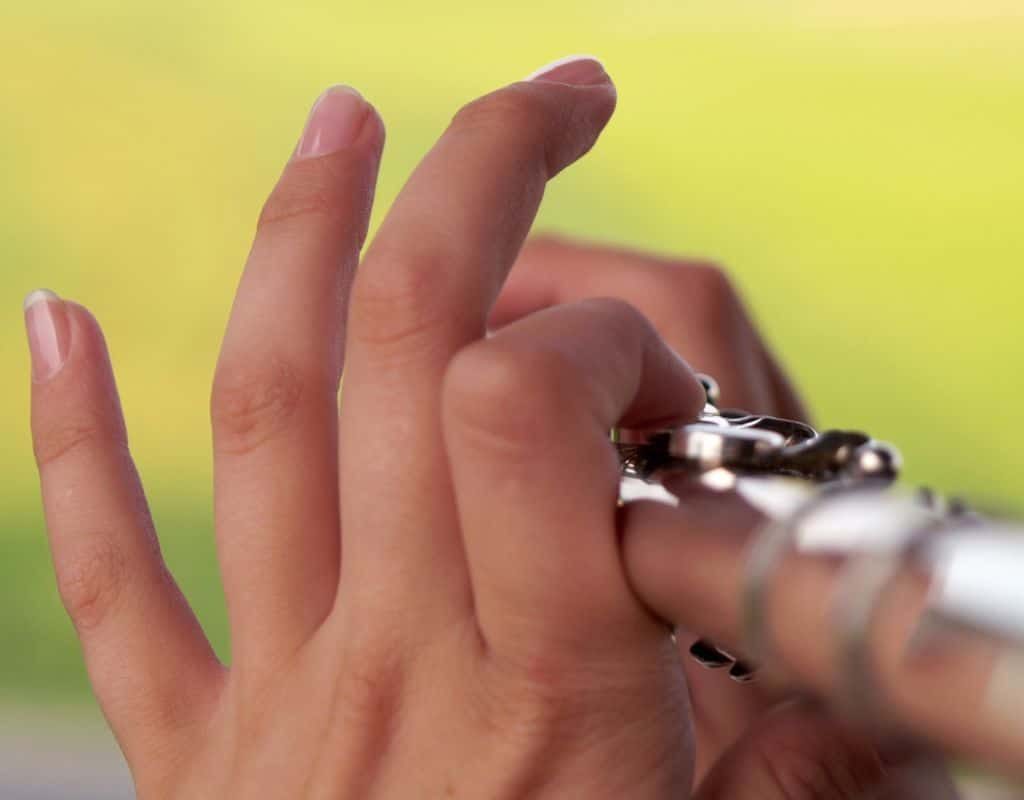
Importance of Breath Support in Flute Fingering
When playing the flute, breath support is crucial for a high-quality performance. Breath support controls respiratory muscles to regulate airflow, speed, and pressure. This technique can improve endurance and allow for better control of sound production.
During flute playing, extending the duration and power of exhalation and increasing inhalation volume beyond normal breathing requirements is essential.
Professional players use the external intercostals and diaphragm when inhaling and internal intercostals and abdominals for exhaling. Knowing the importance of breath support can help you become a better player.
3 Recommended Best Student Flutes
Yamaha YFL212 Student Model Flute
Yamaha YFL212 Student Model Flute

FEATURES: Responsive sound with superb intonation
OTHER INFO: Nickel silver body for durability
Yamaha YFL212 Student Model Flute
- Offers comfortable playing with offset G and E-mechanism
- Ideal for students seeking to develop their skills
- Register for 5-year extended warranty and 3-months Tomplay Premium
- Higher price range compared to other beginner flutes
When you click ‘Check Price’, you’ll see there are loads of great places to buy this item. Our personal favorite is Sweetwater for the US, and Thomann and Gear4Music for the UK & Europe.
They are the largest music retailers, with excellent customer service, competitive prices, really fast shipping, and the longest guarantees.
The professional musician who wrote this article combined many things,
from the product build, manufacturer’s reputation through to feedback
from other users, to create our famous TedScore™.
Nuvo jFlute 2.0 Outfit
Nuvo jFlute 2.0 Outfit
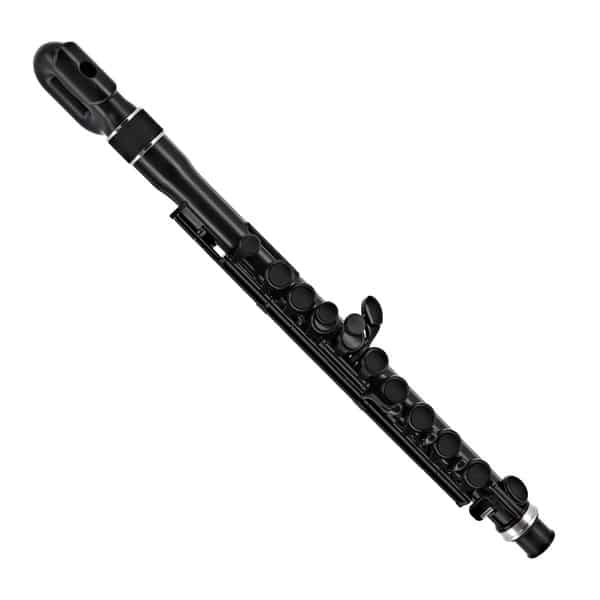
FEATURES: Durable ABS resin construction
OTHER INFO: Waterproof design for easy maintenance
- Available in a range of bright colours
- Includes everything you need to get started
- Do not produce the best sound like from a metal flute
When you click ‘Check Price’, you’ll see there are loads of great places to buy this item. Our personal favorite is Sweetwater for the US, and Thomann and Gear4Music for the UK & Europe.
They are the largest music retailers, with excellent customer service, competitive prices, really fast shipping, and the longest guarantees.
The professional musician who wrote this article combined many things,
from the product build, manufacturer’s reputation through to feedback
from other users, to create our famous TedScore™.
Student Flute with Case by Gear4music
Student Flute with Case by Gear4music

FEATURES: Closed hole design
OTHER INFO: Easy playing response with a bright and open tone
- Lightweight and durable body with a reliable construction
- Great value set includes case and cleaning tools
- None!
When you click ‘Check Price’, you’ll see there are loads of great places to buy this item. Our personal favorite is Sweetwater for the US, and Thomann and Gear4Music for the UK & Europe.
They are the largest music retailers, with excellent customer service, competitive prices, really fast shipping, and the longest guarantees.
The professional musician who wrote this article combined many things,
from the product build, manufacturer’s reputation through to feedback
from other users, to create our famous TedScore™.
Flute Fingering Chart:
Final Thoughts
Congratulations!
You have now learned about the Flute Fingering Chart and the basic fingerings for the Boehm-system flute.
Remember, the flute fingering chart is only a guide; you should use your ears to adjust your intonation.
Keep practising and experimenting with different fingerings to find the ones that work best for you. With hard work and dedication, you can master the flute and create beautiful music!
Before you go…
If you’re a beginner and want to know more about flutes, keep reading and check out this next article!
FAQ's
To begin, proper technique is essential for playing the flute well. You want to position your fingers correctly on the keys for clear notes and transitions. A helpful tip is to keep your fingers close to the keys when you lift them. Make sure your fingers are relaxed and not tense. Practising scales is essential for developing finger technique because it provides a solid training ground for your technique.
First, it’s important to understand that C# is a note that is a semitone higher than the C natural and a semitone lower than the D natural note. To play high C# on the flute, you need to close every key meant to be closed with your right fingers except for the G sharp lever that is closed with your left little finger. Then, press the B key with your left thumb and every key that your right index finger, middle finger, and ring finger are supposed to close. Finally, press the roller key with your right little finger.



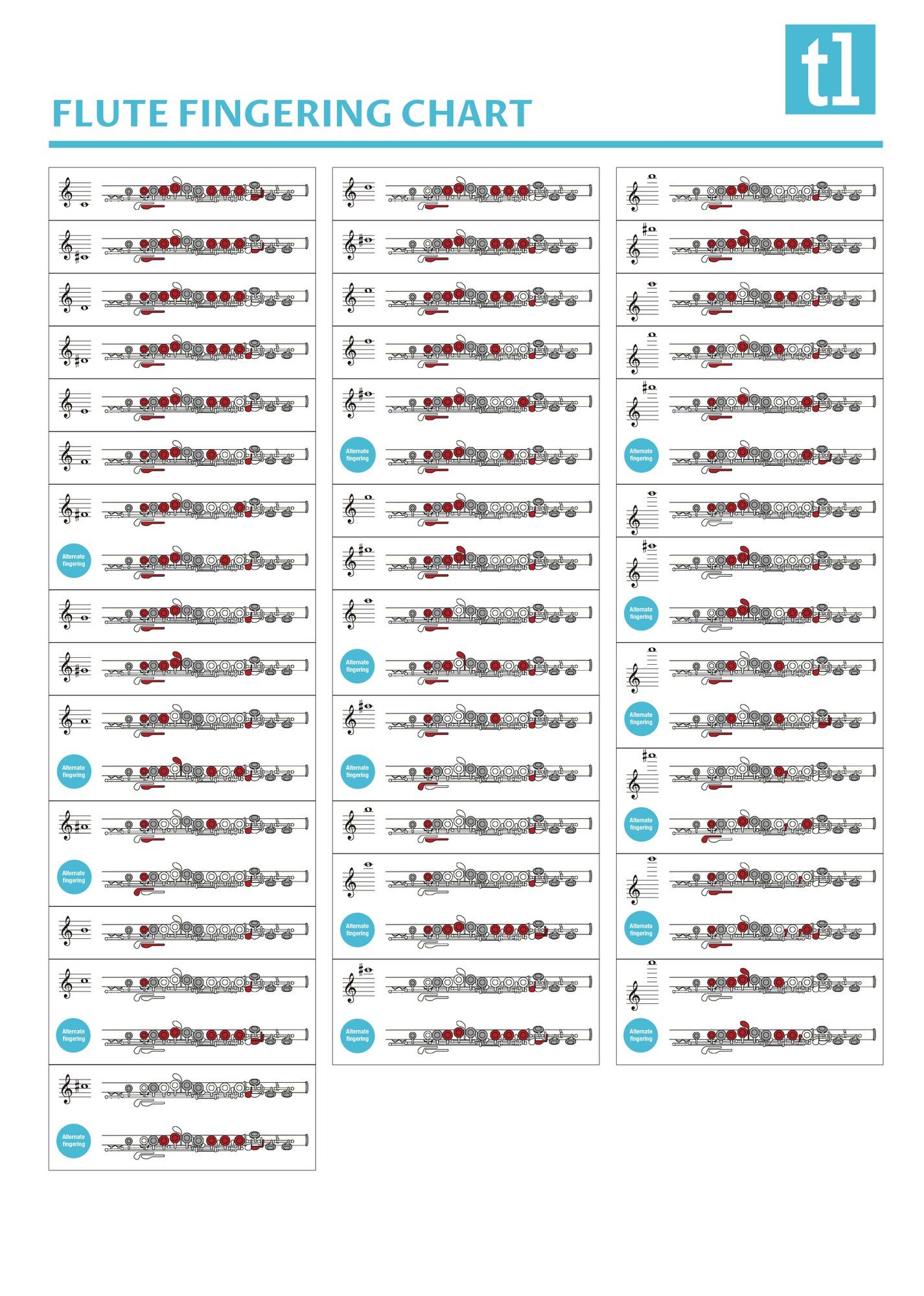







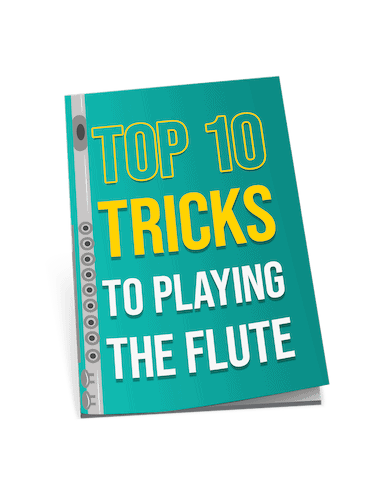
Hi There,
I’m performing sax player trying to polish up my flute chops. Your comprehensive fingering chart is the best I’ve found. It’s easy to read, well laid out and all on one page… well done!
Problem is, I can’t find a downloadable file. If I try to screen shoot it and print it, it’s blurry . Do you have a downloadable file that I can blow up? Ideally, I’d like to print it slightly larger than letter size, so it’s easy to see on a music stand. So if you have a vector file or other high resolution version that would accommodate a larger print, that would be fantastic.
Thank you!
Mark
Breath support is crucial, and I’m glad to see it mentioned here. It’s the foundation of all wind instrument playing, not just flutes.
The section on Thumb Lever (Briccialdi) is interesting, but aren’t there more modern alternatives that provide better ergonomics and response for contemporary flutes? Would love to see a comparison or a modern take on this.
I found the Quarter Tone Fingering Chart particularly enlightening. It’s not often you come across such detailed resources. Excellent for teaching more advanced students!
Agreed, Tom! Love the depth here.
Hey Hannah , got a q about the Basic Fingering Chart. Is it newbie-friendly, or should I get a bit of practice first before diving into it?